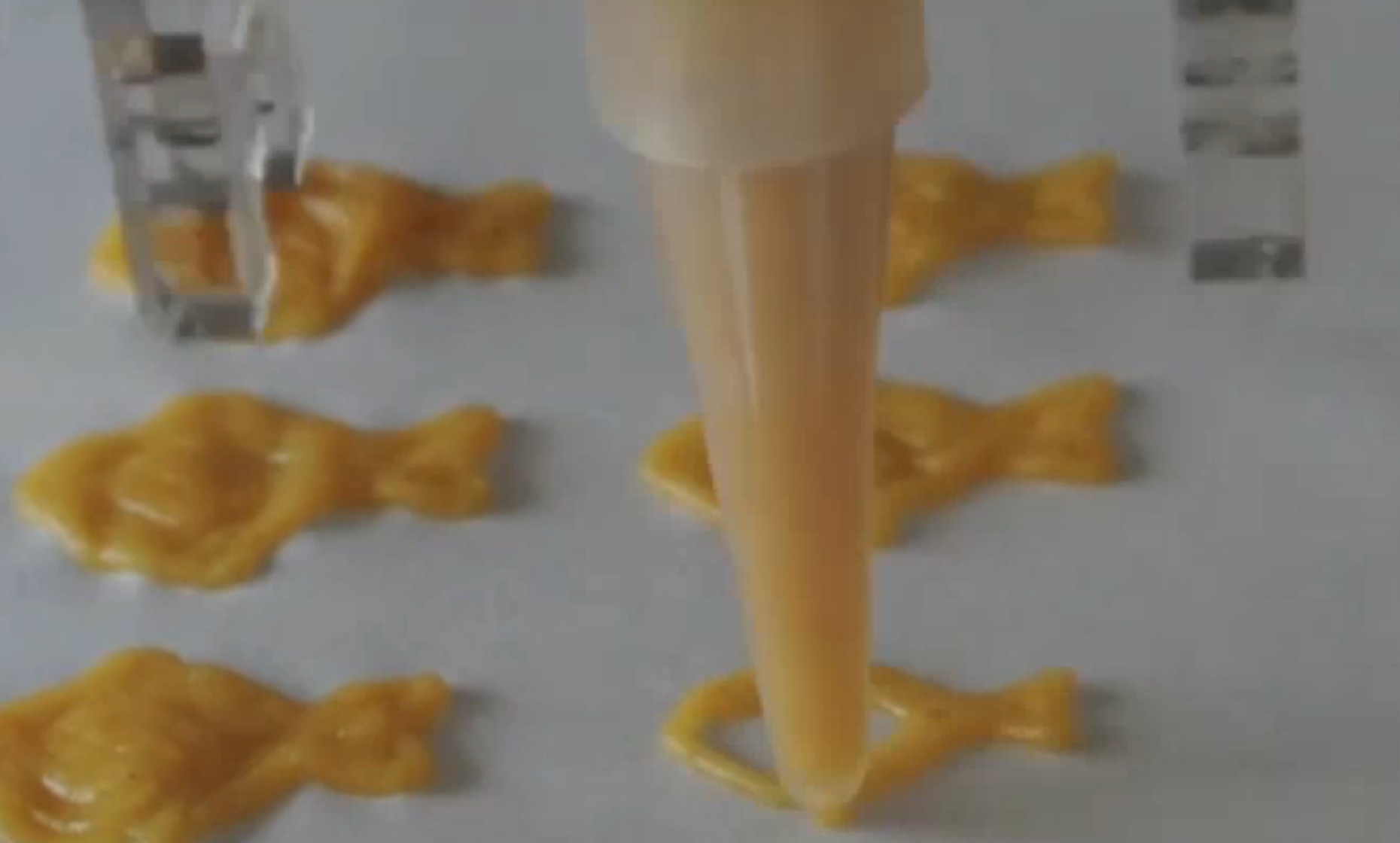
We’re watching a short video from MSN/CNN entitled, “3D Printing to Revolutionize the Food Industry”. We disagree.
The reporter briefly interviews a representative of Natural Machines, who make the Foodini food printer. It’s a fascinating machine that can extrude a variety of food substances in desired shapes. But will it and similar machines “revolutionize the food industry”. We’re skeptical, at least until these questions have been resolved:
Speed. 3D printing is very, very slow, which is not a good attribute when you’re hungry. Imagine waiting for a print of your dinner for six hours? Certainly some dishes do take that long to prepare or longer, but remember the current slate of food printers do not cook the food, they merely arrange it for cooking, with the exception being certain items such as chocolate that can be immediately consumed. Speed is a critical element not only in consumer kitchens, but also in commercial kitchens.
Cost. 3D printers can cost more than your average kitchen appliance, although they are possibly affordable by commercial kitchens, so long as they can produce product with sufficient speed to be cost effective.
Materials. The range of materials usable by current food printers is quite limited, as are all current 3D printers. Worse, most food dishes are composed of many different food materials mixed together in useful and sometimes complex ways. This is not a capability available in current food printers.
Slump. It turns out that most of the food materials printed today are not particularly strong. They cannot be stacked very high, otherwise they begin to slump and lose shape. This is why most 3D printed food demonstrations are more or less flat 2D or 2.5D prints. Solutions to this issue are required.
Cooking. Preparing food is more than arranging food elements. There may be intermediate stages where food material is cleaned, blanched, pre-fried or have other processes applied to it. None of these are presently available on current food printers.
Perhaps someday we may see a “generally capable” 3D food printer, but today were are merely at the beginning of a long exploration into methods of automating food preparation. Yes, you CAN 3D print simple food items, such as the goldfish crackers shown above, however, there’s few things more complex that can be reliably produced today.
There could be a food revolution in the future, but it won’t be for a while yet.
Via MSN and Natural Machines

